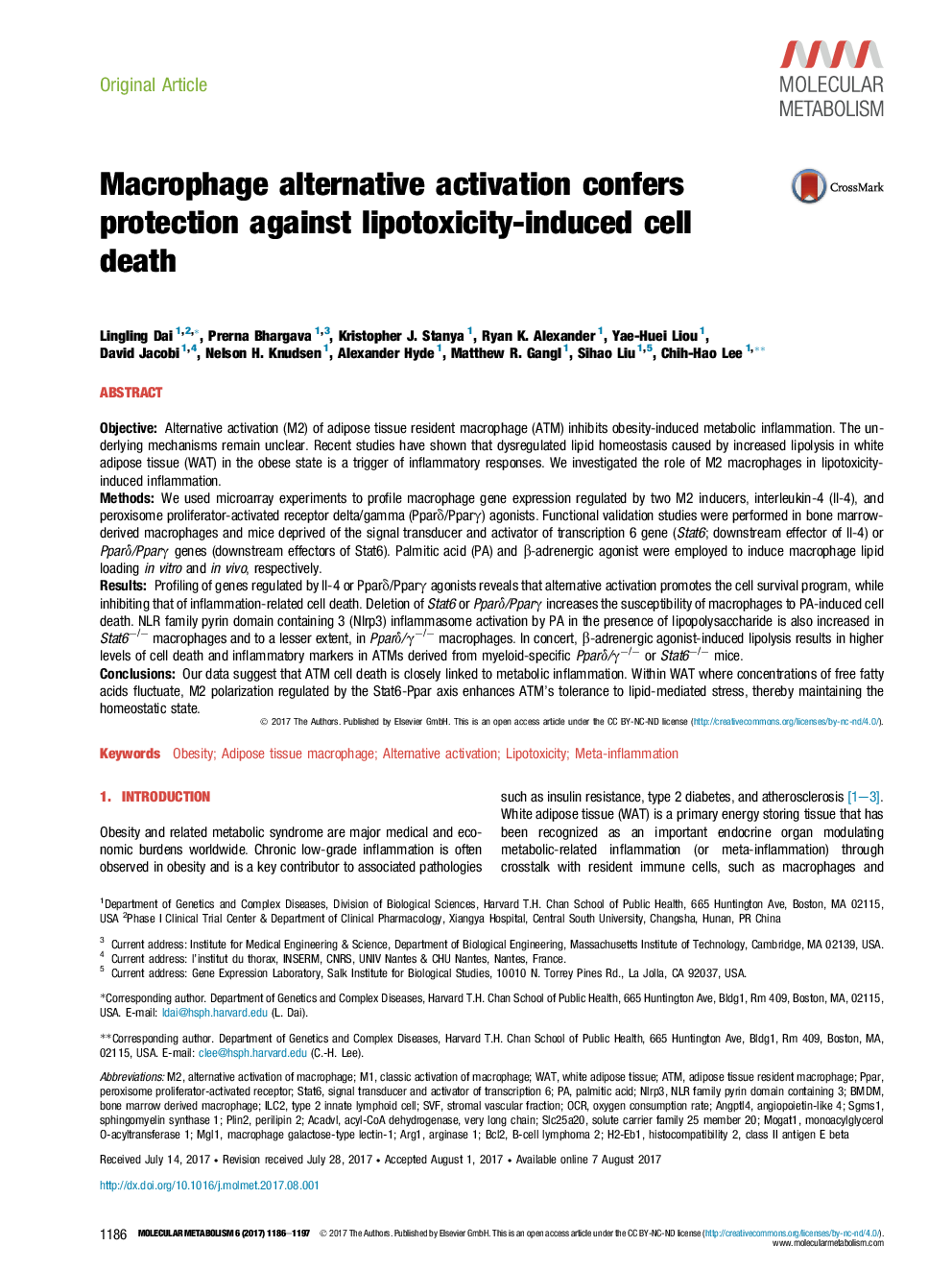| Article ID | Journal | Published Year | Pages | File Type |
|---|---|---|---|---|
| 5618636 | Molecular Metabolism | 2017 | 12 Pages |
â¢Cell survival is transcriptionally regulated by macrophage alternative activation.â¢Fatty acid-triggered cell death is increased in Pparδ/γâ/â or Stat6â/â macrophages.â¢Il-4-Stat6 signaling suppresses lipotoxicity-induced inflammasome activation.â¢The Stat6-Pparδ/γ axis protects ATMs against lipolysis-induced cell death in vivo.
ObjectiveAlternative activation (M2) of adipose tissue resident macrophage (ATM) inhibits obesity-induced metabolic inflammation. The underlying mechanisms remain unclear. Recent studies have shown that dysregulated lipid homeostasis caused by increased lipolysis in white adipose tissue (WAT) in the obese state is a trigger of inflammatory responses. We investigated the role of M2 macrophages in lipotoxicity-induced inflammation.MethodsWe used microarray experiments to profile macrophage gene expression regulated by two M2 inducers, interleukin-4 (Il-4), and peroxisome proliferator-activated receptor delta/gamma (Pparδ/Pparγ) agonists. Functional validation studies were performed in bone marrow-derived macrophages and mice deprived of the signal transducer and activator of transcription 6 gene (Stat6; downstream effector of Il-4) or Pparδ/Pparγ genes (downstream effectors of Stat6). Palmitic acid (PA) and β-adrenergic agonist were employed to induce macrophage lipid loading in vitro and in vivo, respectively.ResultsProfiling of genes regulated by Il-4 or Pparδ/Pparγ agonists reveals that alternative activation promotes the cell survival program, while inhibiting that of inflammation-related cell death. Deletion of Stat6 or Pparδ/Pparγ increases the susceptibility of macrophages to PA-induced cell death. NLR family pyrin domain containing 3 (Nlrp3) inflammasome activation by PA in the presence of lipopolysaccharide is also increased in Stat6â/â macrophages and to a lesser extent, in Pparδ/γâ/â macrophages. In concert, β-adrenergic agonist-induced lipolysis results in higher levels of cell death and inflammatory markers in ATMs derived from myeloid-specific Pparδ/γâ/â or Stat6â/â mice.ConclusionsOur data suggest that ATM cell death is closely linked to metabolic inflammation. Within WAT where concentrations of free fatty acids fluctuate, M2 polarization regulated by the Stat6-Ppar axis enhances ATM's tolerance to lipid-mediated stress, thereby maintaining the homeostatic state.
